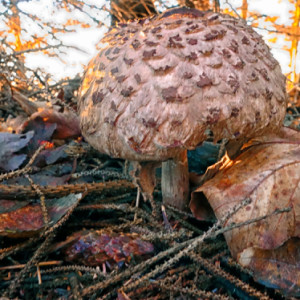A different kind of mushroom.
I picked up this dead coral over 40 years ago on the Astrolabe reef in the Fijis. Measuring about 10 inches across it is the heavy, hard skeleton of a Fungia fungites, otherwise known as the mushroom coral. The image on the left shows the upper surface, the other the lower.
Rather than forming colonies in the familiar manner of most other corals, adult Fungia corals are solitary and free-living, i.e. they are not attached to the substrate and can move about and can even right themselves when turned over by the waves.
When a mushroom coral's thoughts turn to romance eggs and sperm are released into the water column where the fertilised eggs develop into free-swimming larvae. Within a fortnight, the larva settles onto the seabed and forms a vase-shaped polyp that gradually grow into a flattened disc, attached to the substrate via a stalk. The resemblance of the stalked polyps to mushrooms gives these corals their common name. Eventually the stalk of the 'mushroom' dissolves, and the coral begins its adult, mobile life.
On a cold day such as today, life in Fiji seems a very long time ago and a long way away. The location on the map shows where the coral was collected, rather than where it was photographed!
The "extra" is the sort of mushroom that we see in these parts - a shaggy parasol.


Comments
Sign in or get an account to comment.


